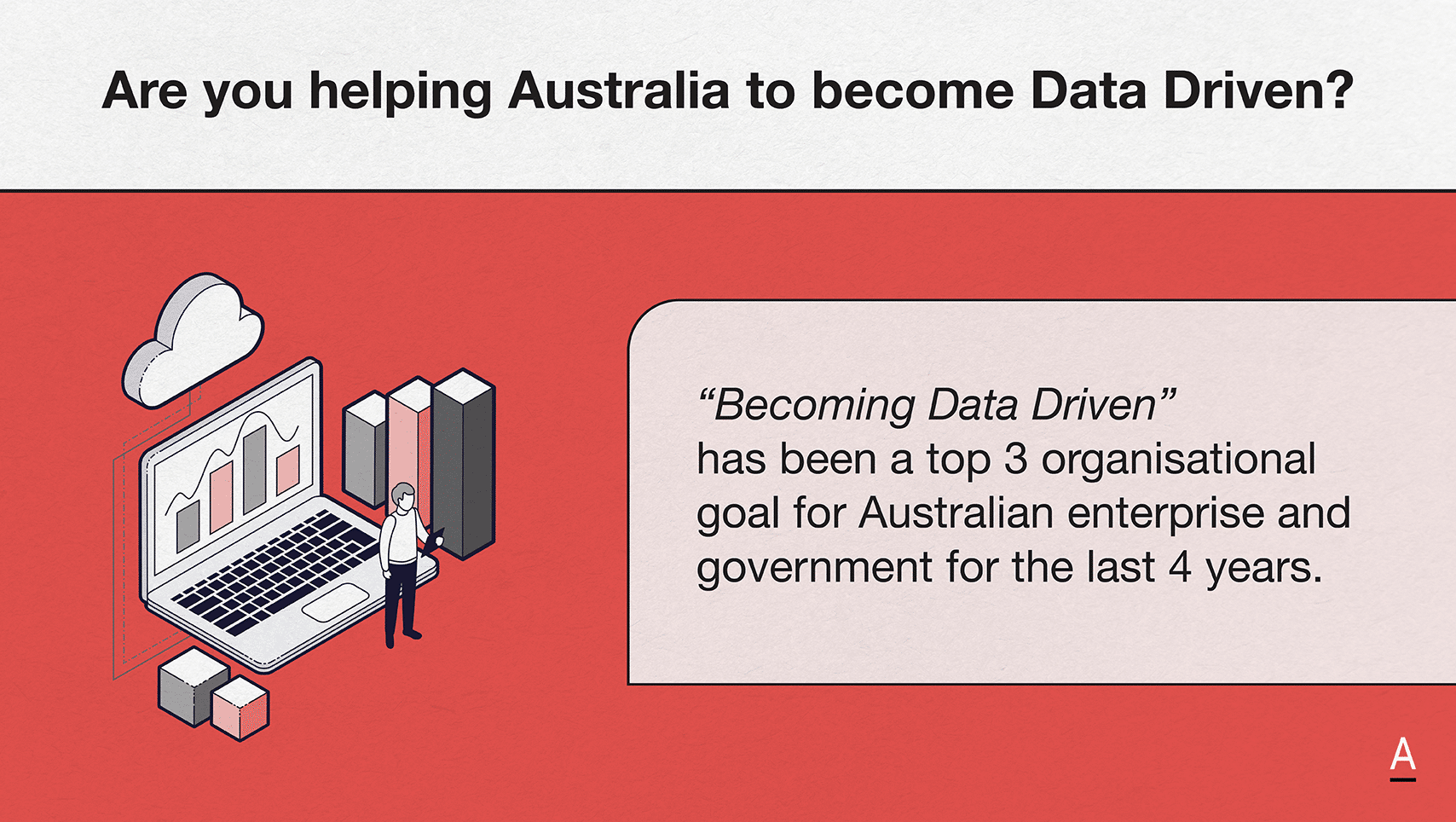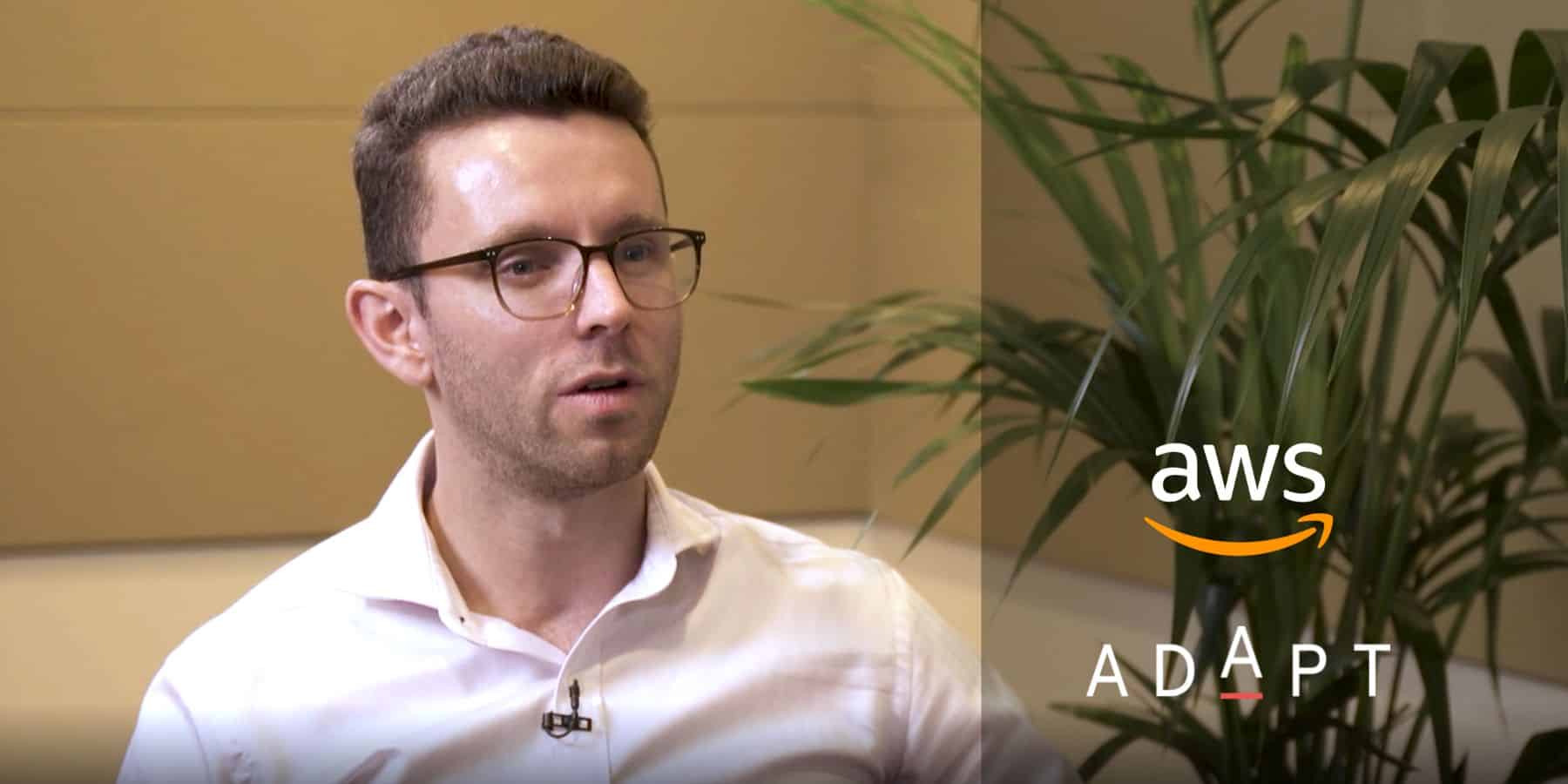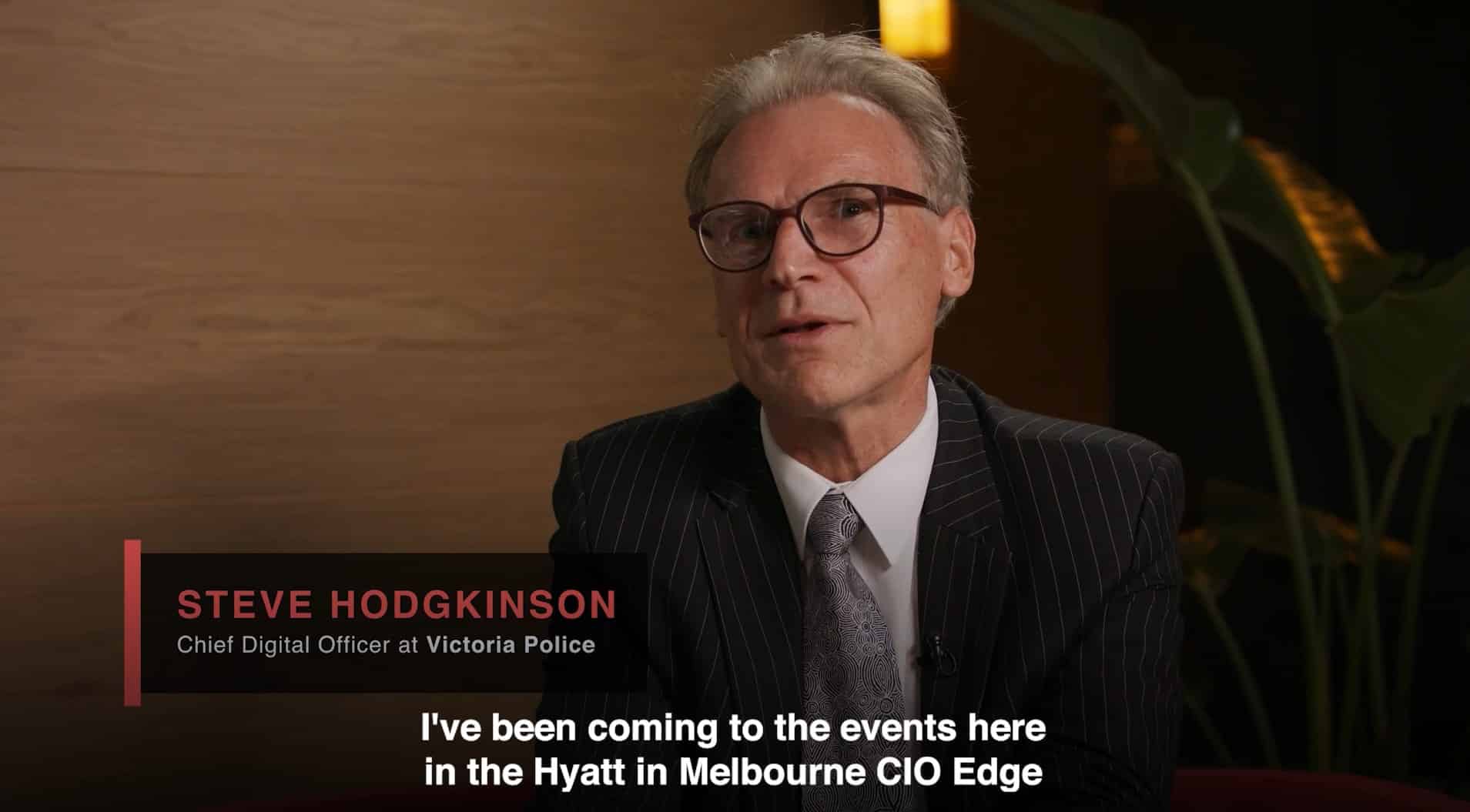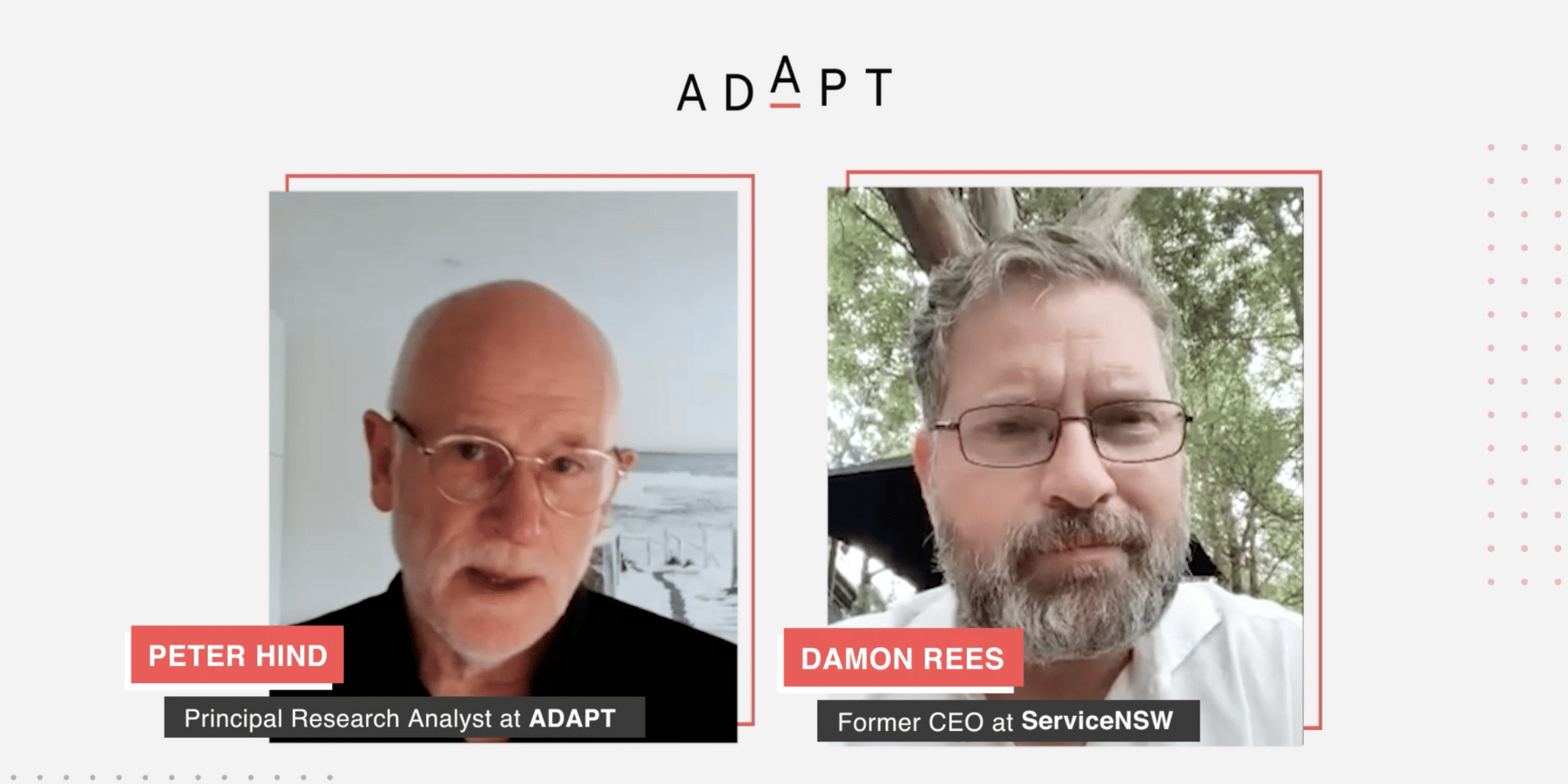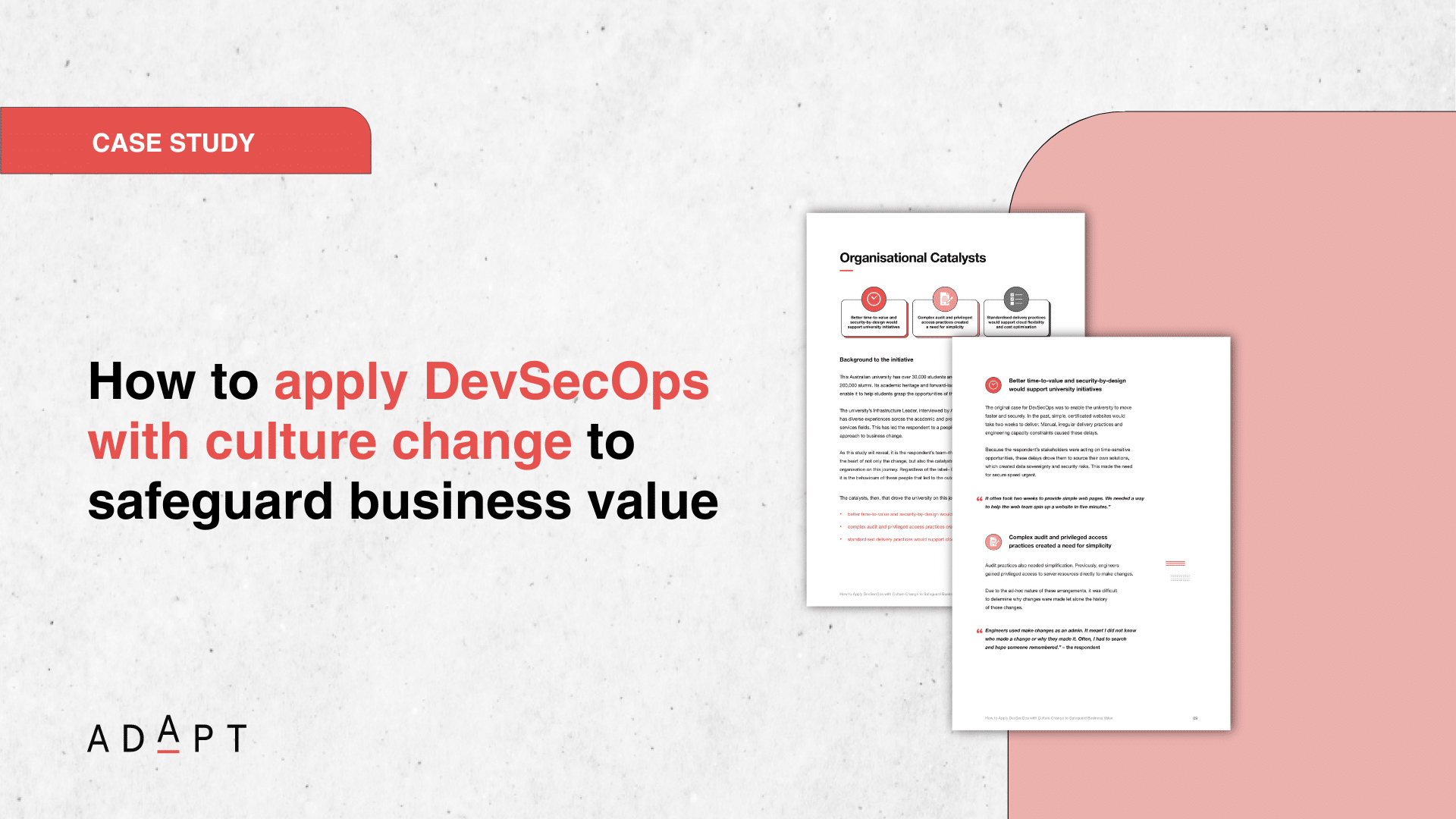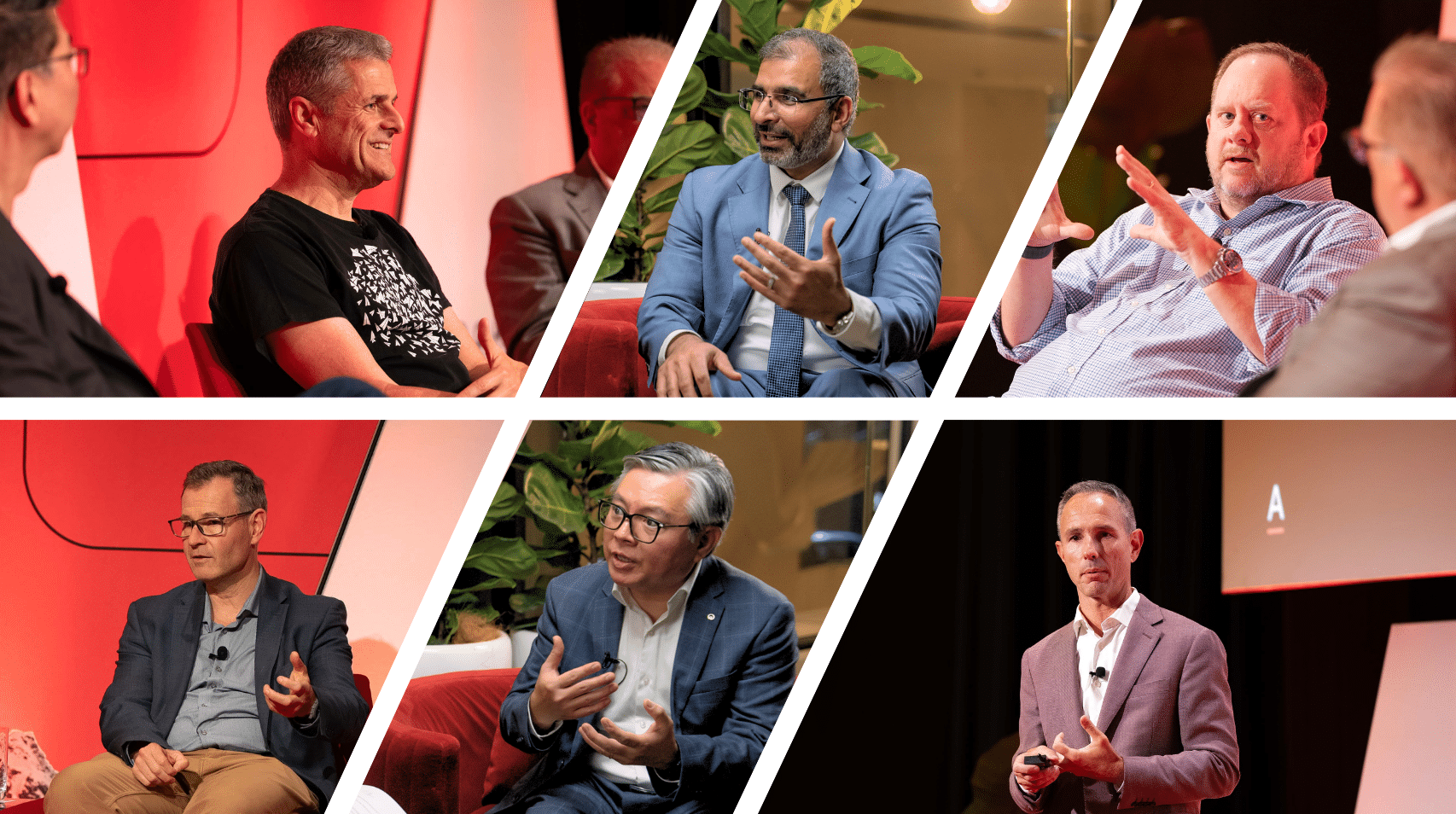Hybrid sprawl is outpacing control as enterprise compute accelerates 26%
Enterprise compute demand is surging. At Cloud & Infrastructure Edge, leaders tackled hybrid complexity, FinOps, AI readiness, and platform resilience.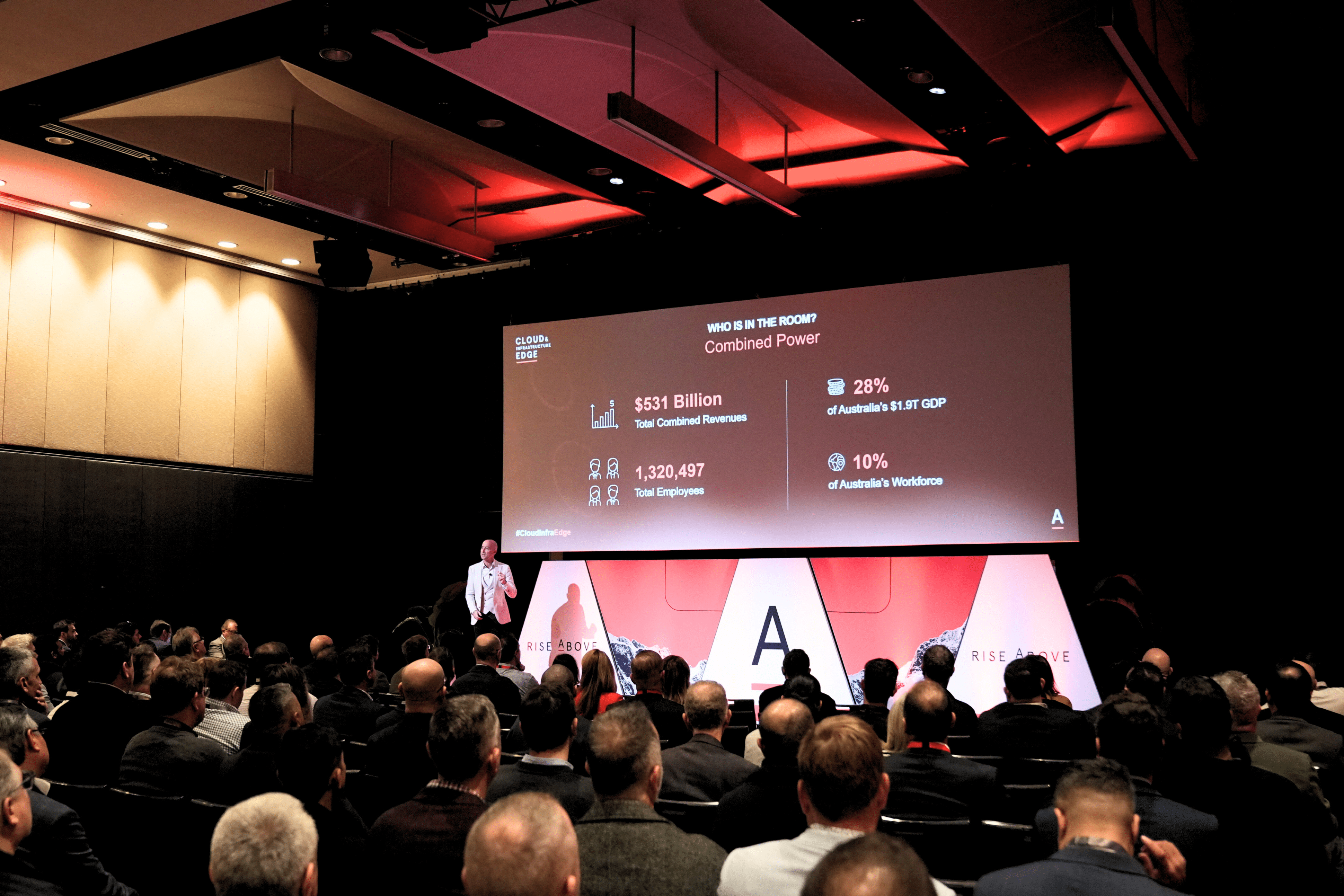
Enterprise compute demand is surging. At Cloud & Infrastructure Edge, leaders tackled hybrid complexity, FinOps, AI readiness, and platform resilience.
Australia’s largest technology environments are being redrawn in real time.
Enterprise compute demand is rising by 26% year-on-year.
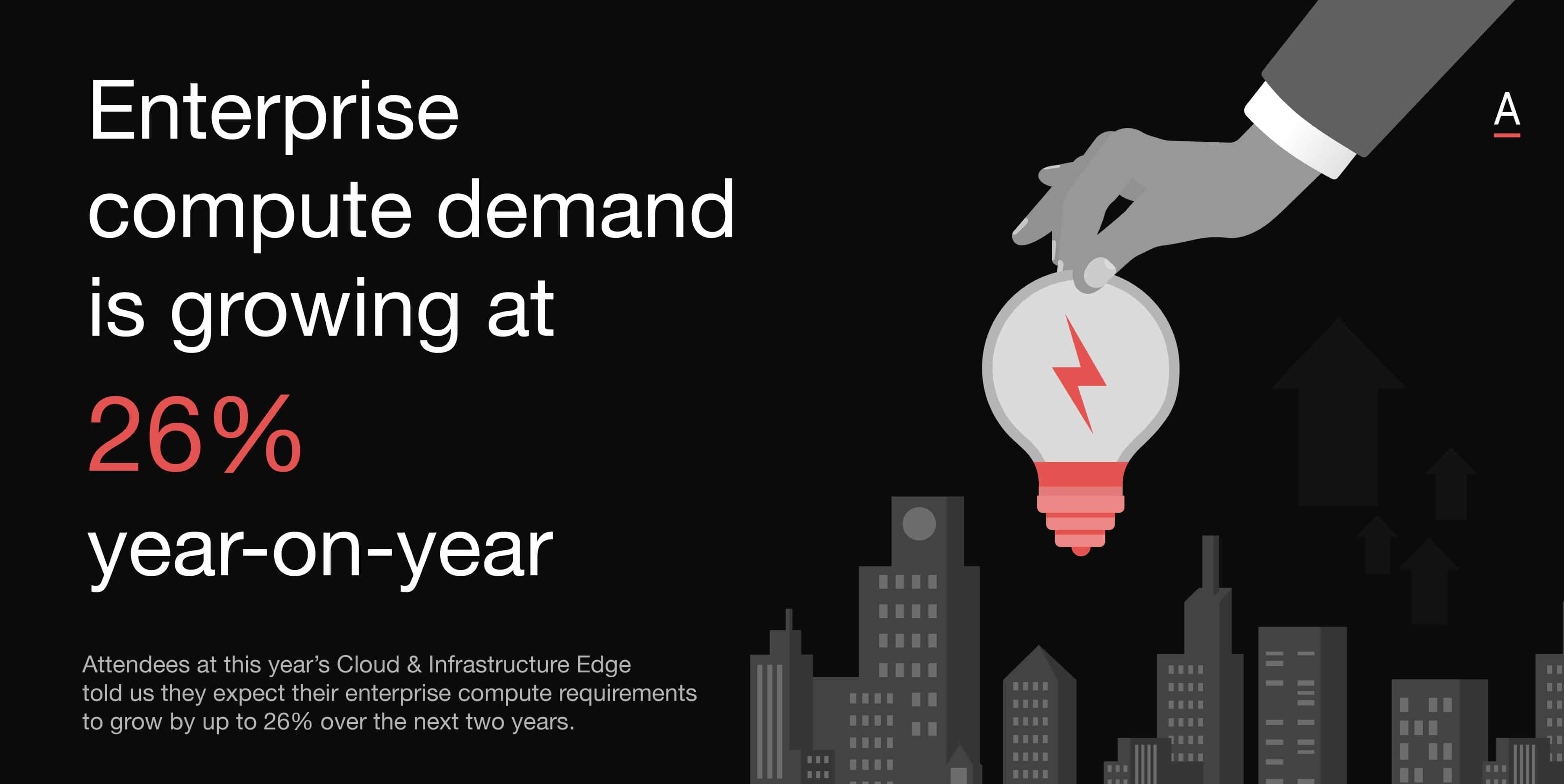
Public cloud dominance is softening, with only 30% of workloads remaining there, down from 46% a year ago.
At the same time, hybrid cloud adoption has quadrupled to reach 21%, and 1 in 4 organisations are actively repatriating workloads.
These shifting dynamics set the tone at ADAPT’s 13th Cloud & Infrastructure Edge.
Over 200 IT and infrastructure leaders gathered to face a shared challenge: how to support AI and business innovation without compounding sprawl, escalating costs, or losing control.
ADAPT CEO & Founder Jim Berry opened the event with a challenge.
While boards are pressuring CIOs and Heads of Infrastructure to “do more with less,” digital complexity has increased operating risk.
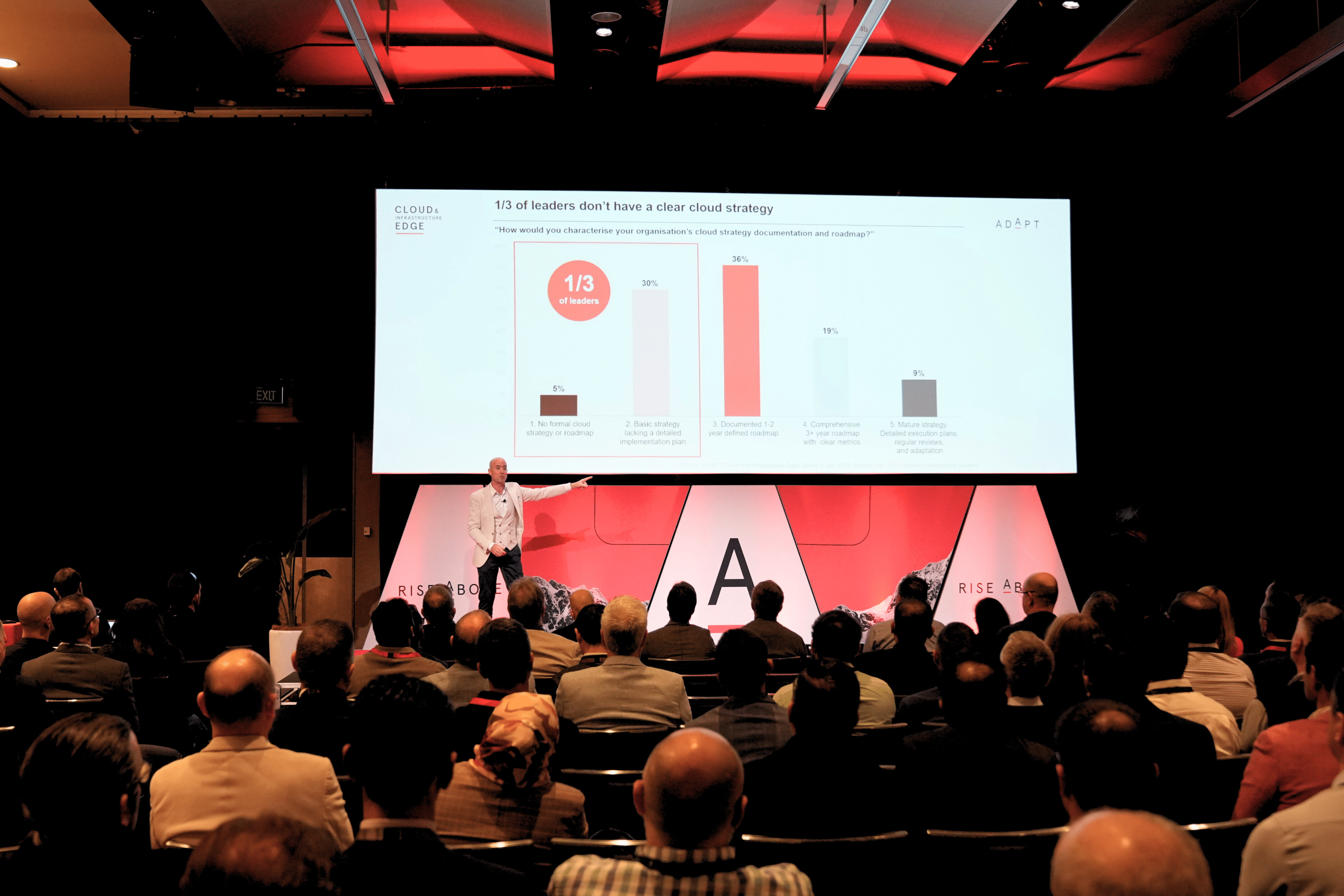
Workload placement, toolchain sprawl, and siloed governance are compounding across cloud, data centres and edge environments.
Without clear observability and cost ownership, the ability to scale AI responsibly is limited.
From that foundation, five imperatives emerged for Australian infrastructure leaders.
Map hybrid workloads to a shared policy and observability layer
Hybrid cloud adoption has surged fourfold in the last year to reach 21%.
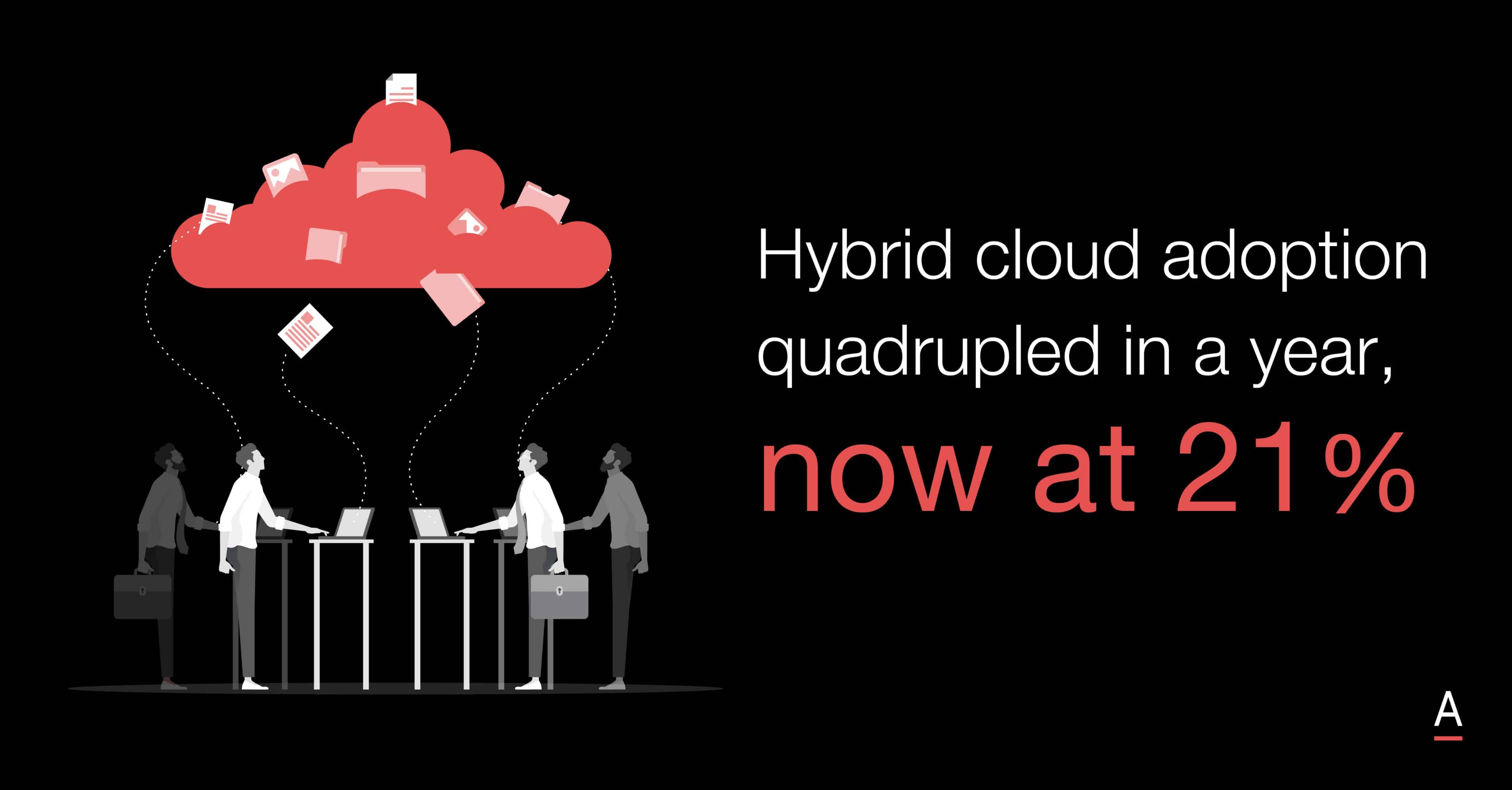
But with that growth comes mounting complexity.
This gap creates downstream problems for platform teams, especially around AI readiness, latency, and cost control.
Gabby Fredkin, Head of Analytics and Insights at ADAPT, highlighted the fragmentation of telemetry as a top concern, with too many infrastructure leaders flying blind between cloud, data centre and edge workloads.
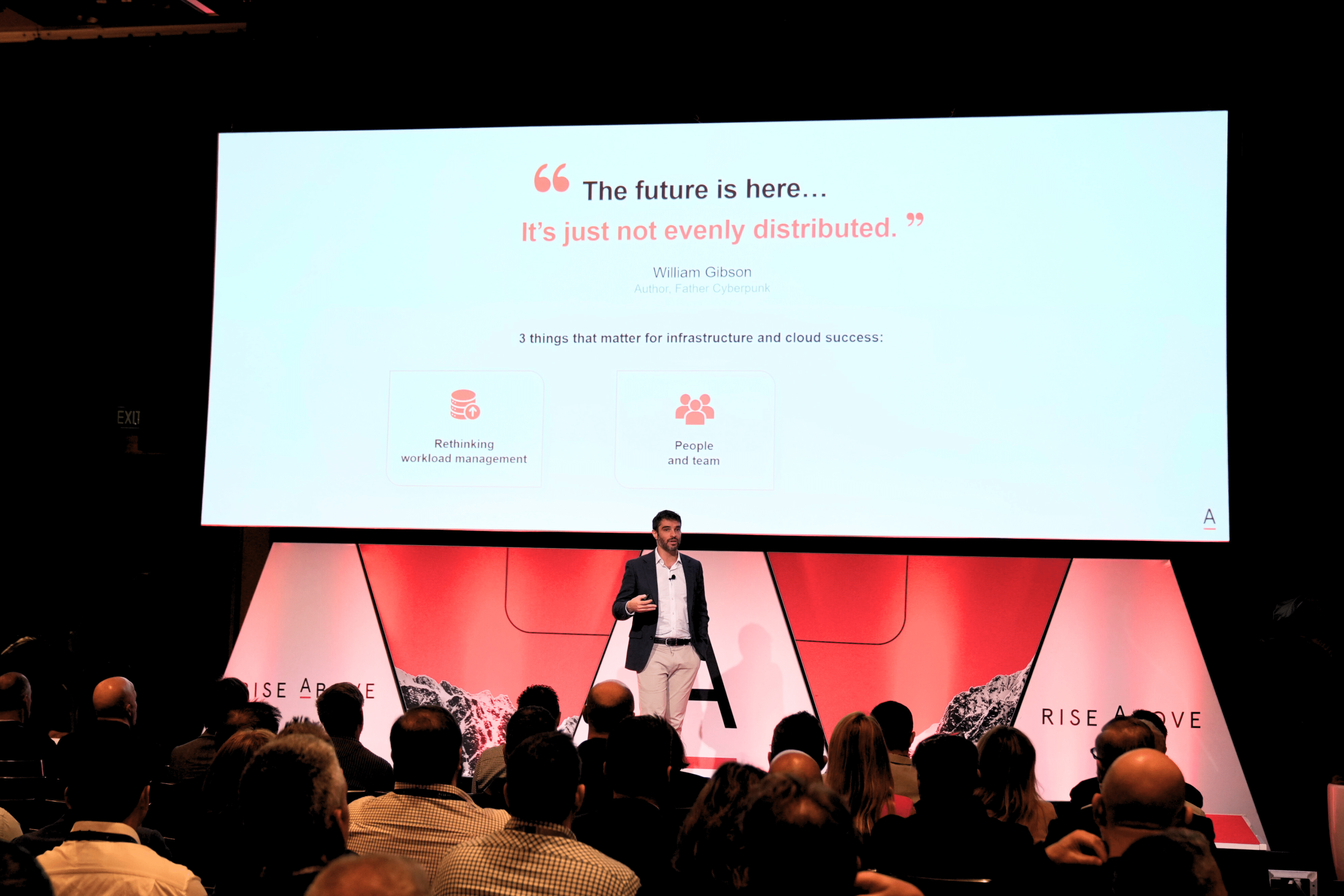
In an interview, Tom Quinn, General Manager Core IT at Metcash, reinforced that platform engineering must reduce risk and increase resilience across distributed infrastructure.

He advocated for creating clear “as-is” maps of tech environments to expose failure points, before designing modular future states that the business can invest behind.
Brendan Humphreys, Chief Technology Officer at Canva, and Nam Je Cho, Director of Solutions Architecture at AWS, emphasised the need for platform abstraction layers that allow policy enforcement and workload placement without reinventing security or performance models per environment.

Matt Boon, Senior Research Director at ADAPT, tied this to a broader shift toward platform thinking, creating consistency in policy and visibility regardless of where infrastructure resides.
The rapid growth of hybrid requires rethinking governance and control from the ground up.
Embed cost accountability to mature FinOps practices
Compute demand is accelerating, but cost discipline is lagging.
Wayne Vest, Senior Expert at McKinsey and Company, presented six principles for sustainable FinOps, all centred on shifting cost ownership into product and engineering teams.
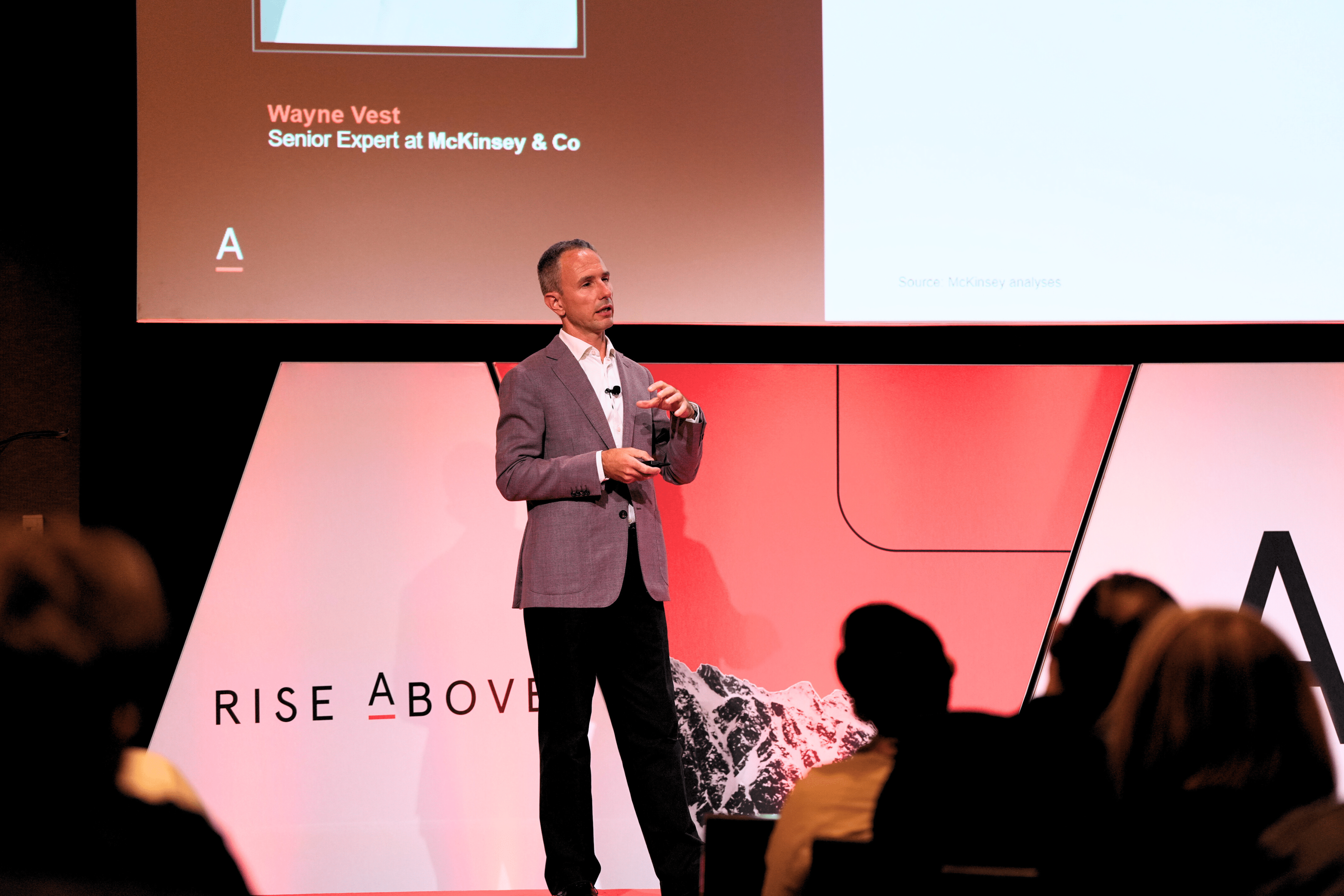
Gabby Fredkin confirmed that few Australian enterprises have embedded real-time cloud cost accountability.
Cost visibility remains retrospective. Budget guardrails often arrive after commitments are made. This gap increases as AI experiments scale.
Wayne advocated for forecast-based planning, engineering-level telemetry, and cross-functional decision rights to ensure resource allocation is linked to business outcomes.
Cost management is no longer a finance function. It must become operational muscle inside the delivery process.
Enterprises that treat FinOps as governance will stall.
Those that embed it into culture and execution will release capacity for innovation.
Integrate security into developer workflows
Security must operate at engineering velocity.
Edwin Kwan, Head of Product Security at Domain Group, and Matt Preswick, Principal Solutions Engineer at Wiz, presented practical approaches to secure-by-default environments.

Edwin shared how Domain Group hardened containers and codified infrastructure standards into shared modules.
Matt warned that scan-based pipelines without automated enforcement lead to alert fatigue and limited risk reduction.
Their approaches represent a shift away from perimeter security.
By automating policy enforcement and placing controls inside pipelines, teams reduce friction and increase adoption.
ADAPT’s latest survey found that 63% of IT leaders are now bringing identity and access management back in-house.
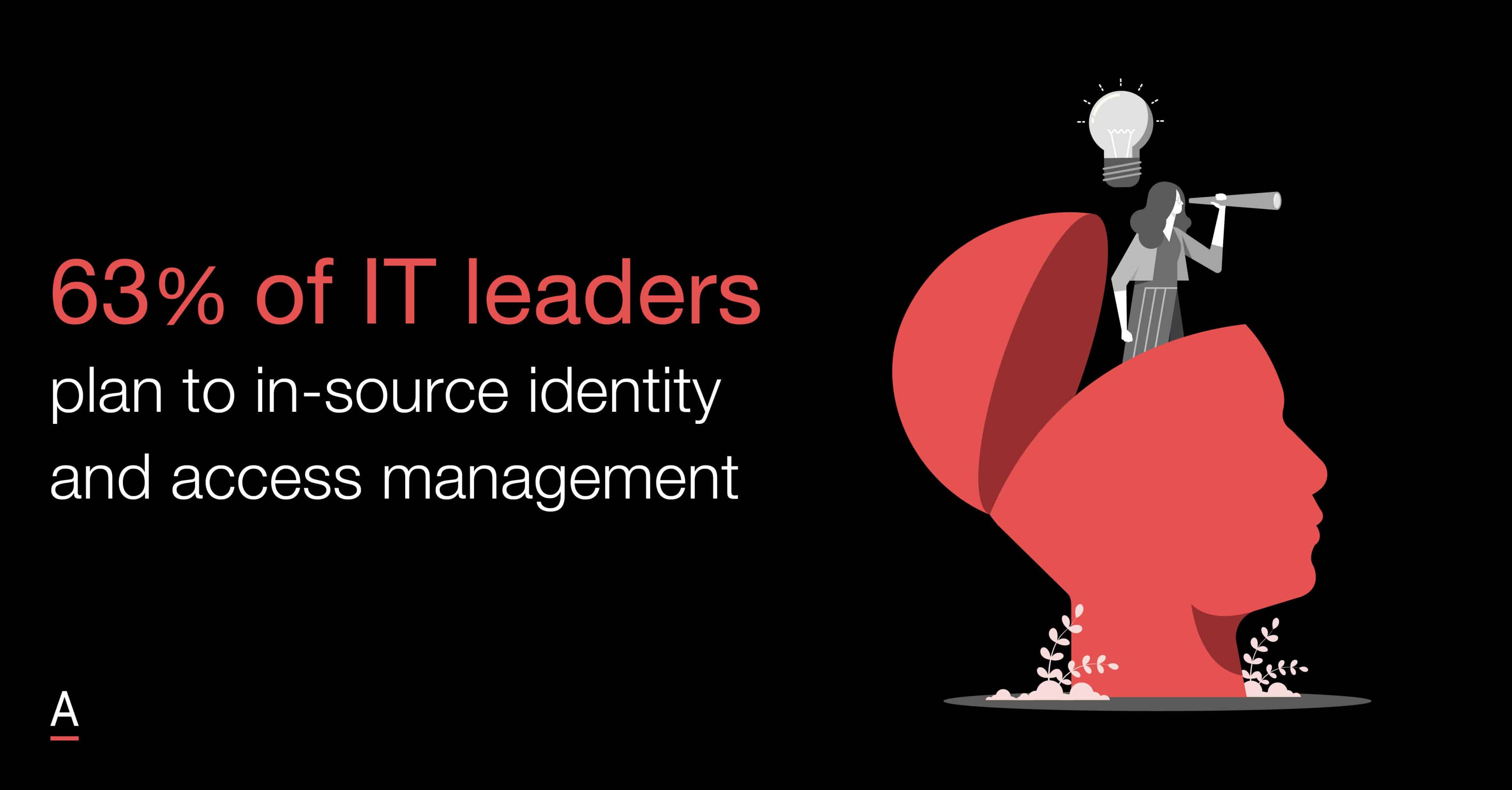
This shows a national push toward internalising security and embedding it closer to where software is built.
Security must operate inside the build process to ensure adoption, enforcement, and speed.
Build modular infrastructure footprints for AI enablement
AI adoption is constrained by legacy environments.
Raj Singh, Targeted Segments Enterprise Sales Leader at Schneider Electric, described how thermal limits, power draw and inflexible footprints are reducing the efficiency and scalability of AI infrastructure.

Bevan Slattery, Founder of five ASX companies such as PIPE Networks, NEXTDC, Megaport, Superloop, SubPartners, SUBCO and SODA, noted that Australia’s data centres were not designed for the density and performance profile of modern AI workloads.

Liquid cooling, energy orchestration and modular power planning are now critical design elements.
Matt Boon reinforced that platform modularity determines speed to deploy and AI accessibility across the enterprise.
AI readiness starts with infrastructure design and capacity, before any software choices.
Organisations that treat AI infrastructure as an add-on will experience cost blowouts, performance bottlenecks and poor return on investment.
Redesign data centre strategy to support sustainable performance
Repatriation is accelerating.
Only 30% of workloads remain in public cloud, down from 46 percent last year.
One in four organisations are actively moving workloads back to on-premise and colocation environments.
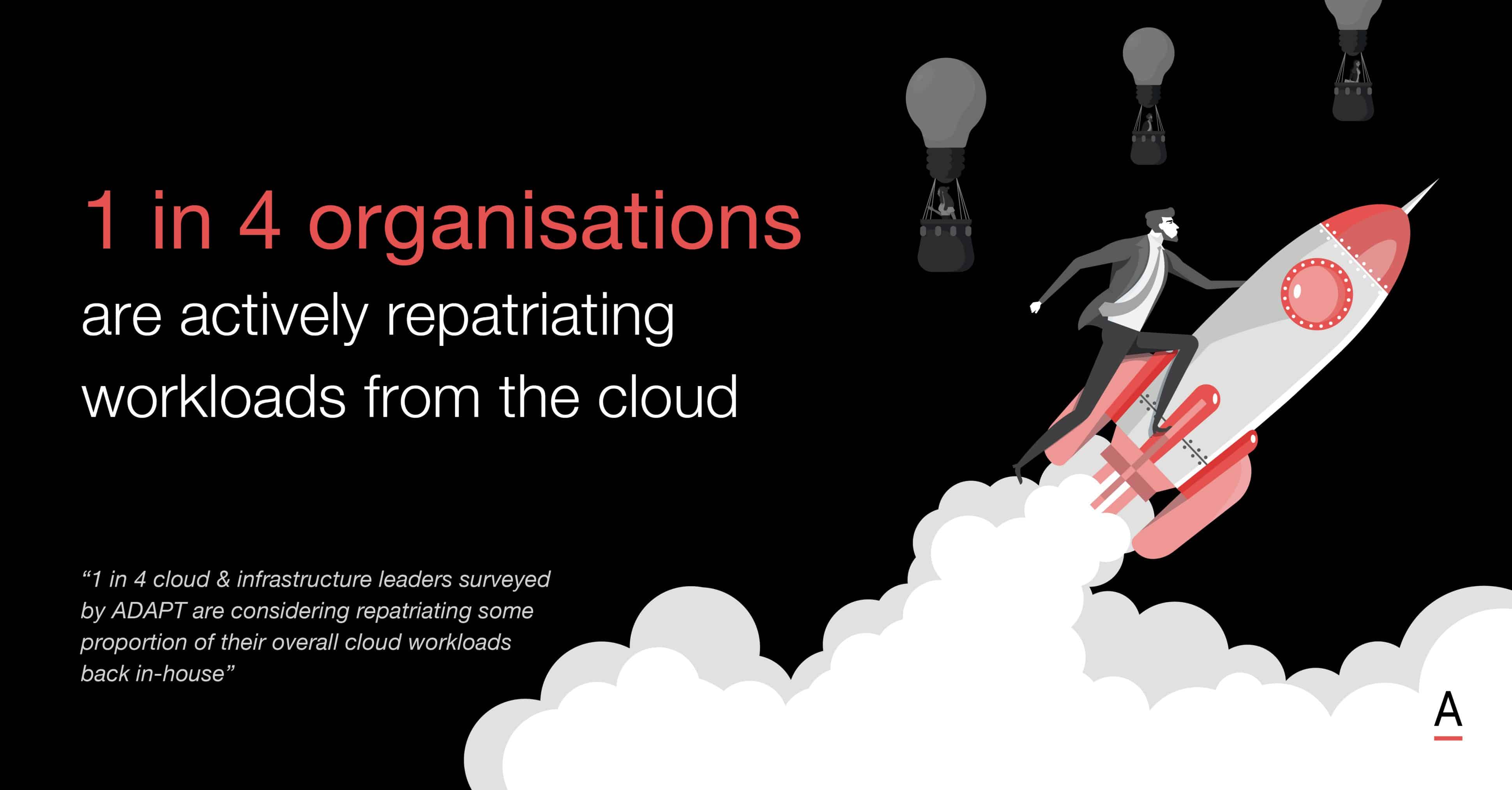
Adam Gardner, Head of Edge at NEXTDC, and Matt Gurr, Senior Director of Design Management APAC at NTT, explained how AI and high-performance computing are reshaping data centre requirements.
Density, cooling, ESG performance and automation are now core design considerations.
Peter Alexander, Chief Technology Officer at the Department of Defence, added that sovereign infrastructure is essential for mission-critical applications and governance compliance.
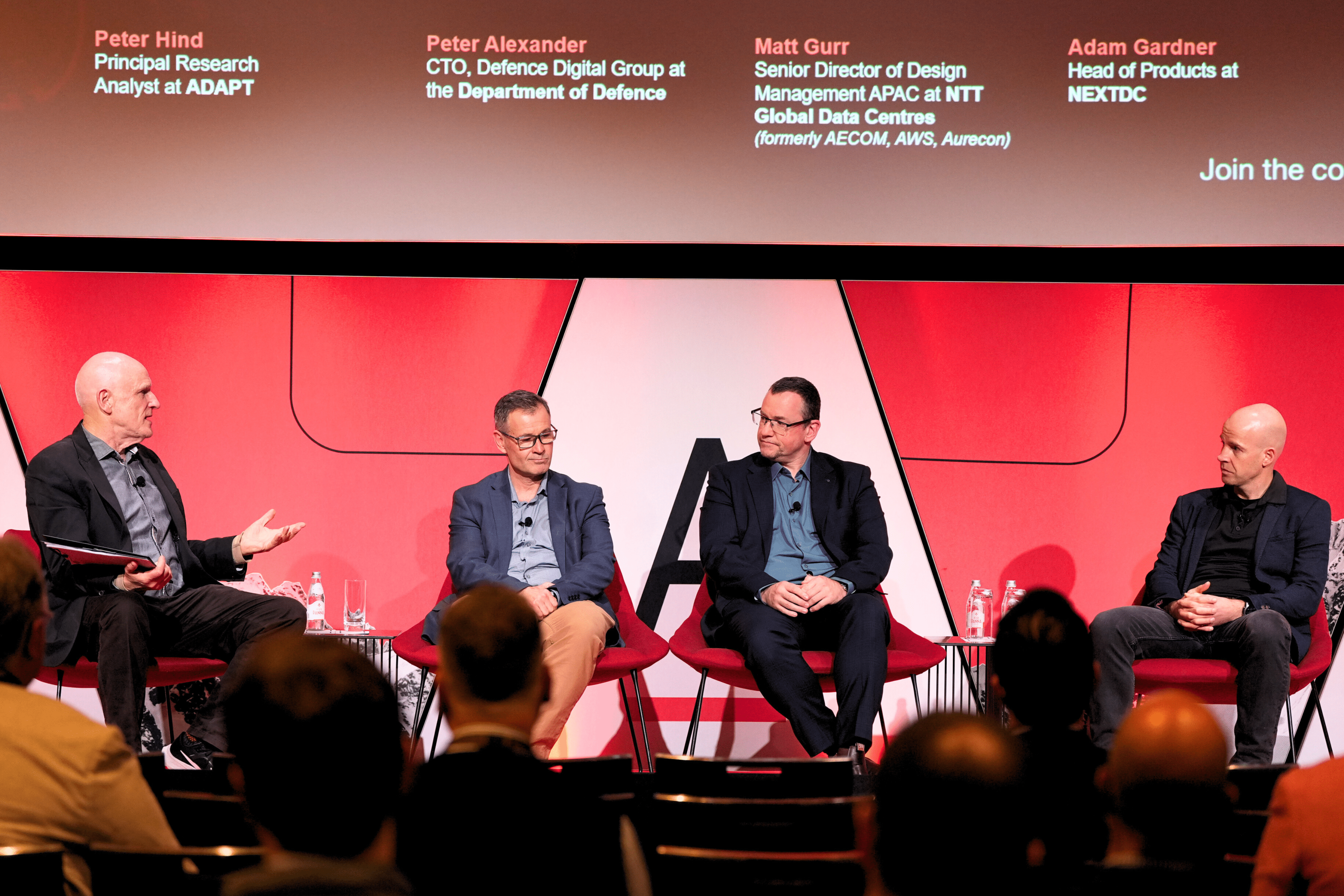
Binh Lam, Senior Director – Head of Enterprise Internet Services at NTT, advised that multicloud observability and physical layer design must be unified to meet both customer and regulatory expectations.

Redesigning data centre strategy is no longer optional for enterprises that seek AI advantage.
The next generation of enterprise platforms will prioritise control, sustainability, and agility over generic cloud scalability.
Prioritise edge infrastructure for real-time applications
AI must operate close to where value is created.
John Hopping, CTO APAC at Ericsson Enterprise Wireless, shared examples of Edge AI deployments across energy, logistics and manufacturing.
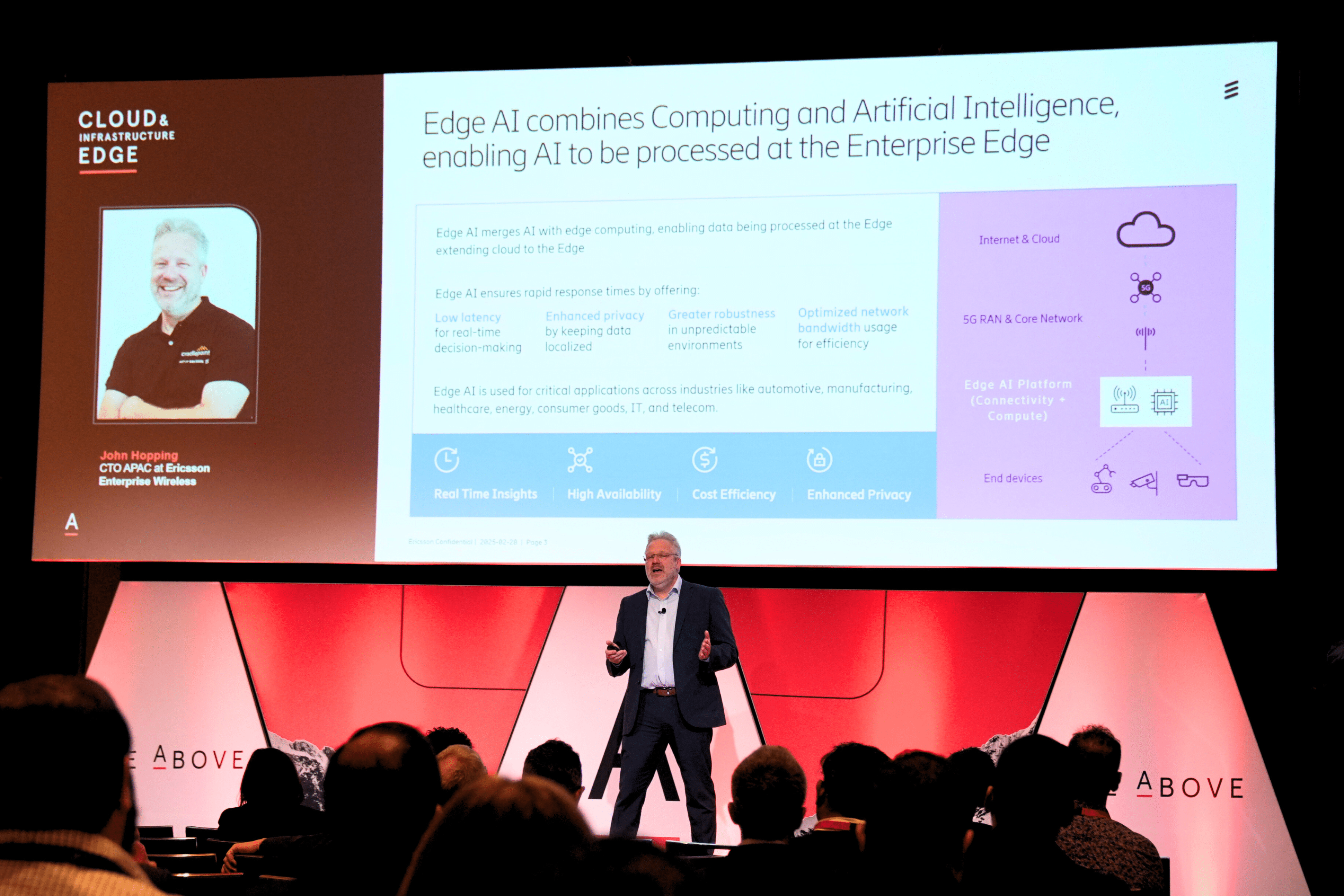
These use cases depend on low-latency compute, secure local decision-making, and high-availability connectivity.
Raj Singh tied edge investment to business resilience.
By decentralising processing and inference, enterprises can reduce service disruption and increase autonomy in field operations.
Asif Gill, Head of Discipline Software Engineering at UTS, extended this further.
He described the rise of digital twins and enterprise satellite views that unify observability, configuration and policy control across federated edge environments.

Asif also called for intentional design in cloud-native adoption and proposed sector-wide AI infrastructure strategies to ease access to compute, especially in education and research sectors.
Meanwhile, Matt Boon observed that most Australian organisations are still in early discovery stages.
Few have built telemetry, governance or lifecycle management across distributed edge environments.
Those that move early will define the operating model for real-time, data-intensive, autonomous systems.
Recommended actions for cloud and infrastructure leaders
Australian infrastructure leaders face a clear execution gap. Demand is rising. Budgets are tightening.
Legacy design is failing to support emerging AI and hybrid use cases.
These actions outline the next steps to restore control and accelerate value delivery:
- Map hybrid workloads to a shared policy and observability layer across cloud, data centre and edge environments
- Embed real-time cost ownership into engineering and product teams to unlock FinOps maturity
- Integrate security into developer workflows through secure defaults and automated enforcement pipelines
- Build modular infrastructure footprints that support AI thermal, power and latency profiles
- Prioritise edge infrastructure investments for real-time AI applications in industry and field operations
- Redesign data centre strategies with AI workloads in mind, including liquid cooling and energy orchestration
What is next for Australian cloud & infrastructure leaders
Australia’s infrastructure is being rebuilt under pressure.
Compute demand, AI workloads, regulation and energy constraints are rising together.
Leaders must move from managing environments to engineering systems.
Success rests on unified control, embedded accountability and modular design.
This shift is already underway. Infrastructure maturity now dictates how fast enterprises can deliver, compete and evolve.




